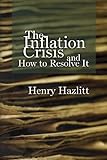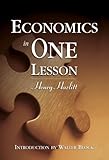by Gideon Dene
THE WORKS of American Mercury contributor and editor Henry Hazlitt (he was H.L. Mencken’s chosen successor) are brilliant gems of economic insight which, if they were only more well known, could change the downward spiral of the West’s economic fortunes.
Did you know, for example, that inflation is not a rise in prices?
Did you know that “government economic stimulus” is in the fact the opposite of what its name implies?
Hazlitt was a man of logic, reason, and science who could also write with wit and style. He was a gentleman of the old school whom we’re proud to have had on the Mercury masthead. Hazlitt had his lapses. He favored a gold standard as a form of discipline, or enforced honesty, upon banks and governments, as he should have. But he failed to address the ways in which bankers can get around that discipline through fractional reserve banking.
His greatest contribution was to dispel the hoary shibboleths of economics that are, sadly, still taught in the schools and parroted by media talking heads. When Henry Hazlitt clears the cobwebs from your mind, you’ll probably say “Wow!” I did.
Two of his most important books have recently been republished in new editions. According to the Henry Hazlitt Web site:
The Inflation Crisis and How to Resolve It

Henry Hazlitt was not mainly a theoretician. He was a financial journalist, commentator, and interpreter of current events. In this sense, he was one of a kind: a learned economist with both feet in the real world of politics, financial markets, and the economics of everyday life.
The Inflation Crisis and How to Resolve It , newly in print in hardcover at a low price, is his masterpiece on money. The book reappears just in time: we are in the midst of an inflation crisis even if the effects are not yet fully felt.
By inflation, he didn’t mean rising prices. He meant the tendency of government and the central bank to print money in pursuit of prosperity. In this sense, no book could be more directly related to our own times, as Bernanke and Company use and abuse the power of the Fed as never before.
He begins with an overview of what inflation is and covers the abysmal record of government money management. He clearly explains the cause and effect: first comes the printing and then come the business cycles and price increases. He explains that the only real cure for all of the effects is to treat the cause: end the government’s power to print. For this reason, Hazlitt favors a gold standard.
From a reader point of view, Hazlitt’s book is pure pleasure. As Mencken said of him, he was the only economist of his generation who could really write. He is clear as a bell, and why? Because he had a passion for explaining economics to every living person. He did not think that economics should be left to the academy or to investment firms.
This book came out in 1978 and it’s been thirty years out of print. It is one that the Mises Institute wanted to have in print for many years, and it is an event to celebrate that it is finally here, in a beautiful edition at a rock-bottom price.

This is a new edition of the classic book that has taught many millions sound economic thinking. It is a hardbound volume, and now available for anyone who needs to understand what economics implies for the society, government, and civilization.
Hazlitt wrote this book following his stint at the New York Times as an editorialist. His hope was to reduce the whole teaching of economics to a few principles and explain them in ways that people would never forget. It worked. He relied on some stories by Bastiat and his own impeccable capacity for logical thinking and crystal-clear prose.
This is the book that made the idea of the “broken window fallacy” so famous.
The new edition is beautiful, it is hardcover, and it is newly typeset for modern readers. It has a full index. It includes a wonderful foreword by Walter Block.
This is the book to send to reporters, politicians, pastors, political activists, teachers, or anyone else who needs to know.
Professor Block explains that it was this book that turned him on to economics as a science. He believes that it is probably the most important economics book ever written in the sense that it offers the greatest hope to educating everyone about the meaning of the science.
Written for the non-academic, it has served as the major antidote to fallacies in the popular press, and has appeared in dozens of languages and printings. It’s still the quickest way to learn how to think like an economist. And this is why it has been used in the best classrooms more than sixty years. The new edition dispenses with the additions made by later editors, which only date the book, and reverts to Hazlitt’s own first edition.
